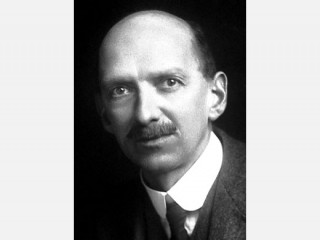
Charles Wilson biography
Date of birth : 1869-02-14
Date of death : 1959-11-15
Birthplace : Glencorse, Scotland
Nationality : Scottish
Category : Science and Technology
Last modified : 2011-02-02
Credited as : Physicist and meteorologist, Wilson cloud chamber, Nobel Prize in physics
The Scottish physicist Charles Thomson Rees Wilson was the inventor and developer of the Wilson cloud chamber.
Charles Wilson was born on Feb. 14, 1869, in Glencorse near Edinburgh. He received his first undergraduate training at Owens College, now part of the University of Manchester, and from there, at the age of 19, he went to Cambridge University with the realization that physics and not medicine was to be his life's vocation.
As Wilson himself disclosed it, two experiences determined the direction and ultimate fortunes of his interest in physics. One was his few weeks' stay in 1894 at the observatory on the top of Ben Nevis, the highest Scottish mountain. The magnificent optical phenomena observable in the interplay of sunshine, mist, and clouds "greatly excited my interest and made me wish to imitate them in the laboratory." The other experience consisted in his being exposed to an electric storm on the summit of Carn Mor Dearg in 1895. From this came Wilson's strong interest in atmospheric electricity, while the first experience inspired his efforts culminating in the construction of the first cloud chamber.
In the beginning of 1895 Wilson concluded that even after the removal of all dust particles, droplets still appeared whenever a volume of moist air was suddenly expanded. He attributed this to a residual conductivity in the air. His reasoning was fully verified a year later when his primitive cloud chamber was exposed to the newly discovered x-ray radiation. In 1904 he also proved that these droplets could be removed from the chamber by an electric field. Not until 1910, however, did he conceive the idea of making visible and of photographing the path of an ionizing particle. The chamber he designed for that purpose was simplicity itself but rested on many years of painstaking effort. It was a flat cylindrical vessel, 16.5 centimeters in diameter and 3.4 centimeters deep, with a fixed glass roof, and a glass floor that could be rapidly moved downward by a piston into an evacuated vessel.
For almost 20 years Wilson's design remained the standard form of cloud chamber by which he took his famous series of photographs of ionization tracks in 1911 and 1921-1922 respectively. The analysis of those tracks proved to be an invaluable tool for all early investigators of nuclear phenomena. Wilson himself provided the experimental evidence for Arthur Compton's theory that in x-ray scattering, the recoil electron takes up the momentum of the quantum of radiation. Fittingly enough, the two shared the Nobel Prize in physics in 1927. It was again the cloud chamber that revealed the existence of positrons and made possible the visual demonstration of "pair creation" and "annihilation" of electrons and positrons.
Upon his retirement from the Jacksonian chair at Cambridge (1925-1934) Wilson took up residence in the village of Carlops near Edinburgh. There he completed his final great study of thundercloud electricity, submitting the manuscript to the Royal Society in 1956, at the age of 87. An indomitable energy and a zest for life were the chief characteristics of Wilson, who took to airplanes for the first time at the age of 86 to observe atmospheric phenomena. He was also possibly the most serene and unassuming among the great scientists of his time. He died at Carlops on Nov. 15, 1959.
















